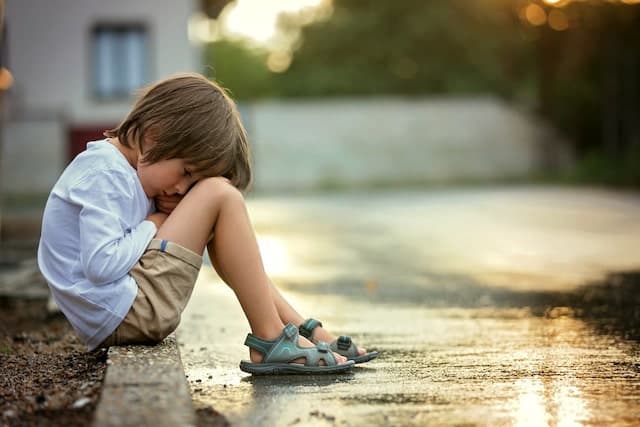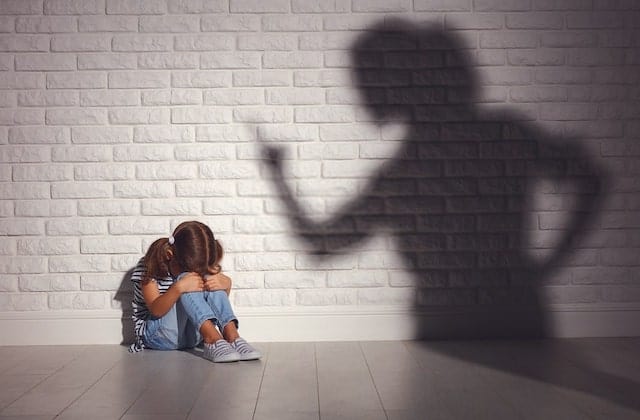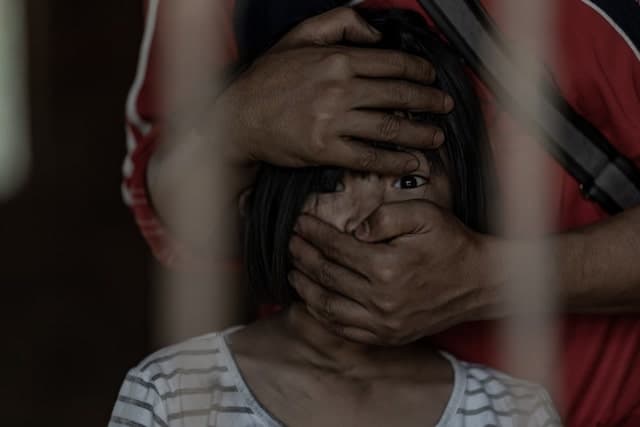
- Definition: Maltreatment or neglect of children
- Types: Physical, emotional, sexual abuse and neglect
- Perpetrators: Parents, teachers, other adults, older siblings
- Victims: Children of all ages, races and social backgrounds
- Gender: Boys and girls equally likely to be victims
- Statistics: 3 million cases every year in the US
- Statistics: 1,500 children die each year in the US due to abuse
- Signs: Injuries, stress, poor school performance, anger issues
- Effects: Emotional, physical, psychological
- Prevention: Awareness training, reducing risk factors, helping families with a history of abuse
- Types: Neglect Is the Most Common Form of Child Abuse
- Types: Sexual Abuse Is Not the Same as Physical Abuse
- Consequences: Child Abuse Can Result in Death
- Consequences: Abused Children Often Become Criminals
- Statistics: 20% of Boys and 30% of Girls Are Sexually Abused before Their 18th Birthday
- Statistics: Child Abusers Are Usually Young or Middle-Aged People
- Gender: Mothers Are More Likely to Be Abusers
- Statistics: Every 10 Seconds One Report of Child Abuse Is Made in the US
- World: Child Labor, Trafficking, Genital Mutilation and Marriage Are also Forms of Abuse
- Future: It Is Difficult to Escape the Cycle of Child Abuse
- Most parents are not aware that they emotionally abuse their children
- Girls are most exposed to sexual abuse, boys to physical abuse
- One-third of sexual child abuse victims are younger than 9 years
- Two-thirds of drug addicts in treatment report being abused as children
- Breaking the myth: Child Abuse is not more frequent among racial minorities in the US
- Human trafficking is the second largest criminal industry in the world
- Sexual offenders of children often abuse repeatedly
- Child pornography is on the rise
- Various celebs have been allegedly involved in child molestation
- 400,000 victims of Child Abuse will be born this year in the US
Child Abuse Infographics

Neglect Is the Most Common Form of Child Abuse

Child abuse facts reveal that neglect is the most common out of 4 basic types of child abuse. It is defined as the inability of caretakers to provide sufficient physical or emotional care to a child or children. Some 78% of all cases of child abuse are classified as neglect, followed by physical abuse with 18%, sexual abuse with 9%, and emotional abuse with 8%. Many children are victims of more than just one form of child abuse.
Sexual Abuse Is Not the Same as Physical Abuse
Physical abuse is defined as physical aggression towards a child, often resulting in injuries or even worse. Although sexual abuse is often also physical, it sometimes lacks direct physical contact (indecent exposure of an adult to a child, indecent viewing of a child’s genitalia by an adult, exposing a child to pornographic material etc.). Sexual abuse is defined as any abuse in which an adult uses a child for sexual stimulation.
Child Abuse Can Result in Death
Child abuse facts reveal that approximately 5 children die every day as a consequence of abuse. Around 70% of these children are younger than 3 years old. Infamous cases of child abuse resulting in death in the US include the Aquatot siblings, Baby Belle, Anjelica Castillo, Marcus Fiesel, Rebecca Riley, Erica Green, Nathaniel Craver, Joseph Wallace, Hana Grace-Rose Williams and thousands of other tragic child abuse victims.
Abused Children Often Become Criminals
Jail population statistics reveal that 14% of all men and 36% of all women in prison were abused as children. Children who experience abuse or neglect are 59% more likely to be arrested as juveniles, 28% more likely to be arrested as an adult and 30% more likely to commit a violent crime later in their life.
20% of Boys and 30% of Girls Are Sexually Abused before Their 18th Birthday
Child abuse facts reveal the grim truth: most sexual child abuse victims are abused by people that are supposed to take care of them. In 68% of cases, family members are the abusers, and in 90% of cases the victim personally knows the abuser.
Child Abusers Are Usually Young or Middle-Aged People
A study done in 2012 shows that over 80% of abusers are between the ages of 18 and 44, with about half of them belonging to the 25-34 age group. Some 80% of all perpetrators abuse their own children, which at least partially explains the perpetrator age statistics.
Mothers Are More Likely to Be Abusers

Parents are the most common perpetrators in child abuse cases and the debate on whether mothers or fathers are the more likely abusers has been going on for years. Statistics show that males are abusers in 45% of cases, and females in 55%. That makes mothers more likely to abuse their children, but it is fathers who are more often involved in sexual and physical abuse that ends with severe physical consequences.
Every 10 Seconds One Report of Child Abuse Is Made in the US
This brings the total number of annual cases up to 3 million. Furthermore, these abuses don’t only affect children in dreadful ways, but also mean a great cost to the community. A CDS study reveals that the lifetime cost of each surviving victim of child abuse is over $200,000 – almost $150,000 due to loss in productivity, approximately $40,000 for health care and about $20,000 for special education, welfare costs and criminal justice costs.
Child Labor, Trafficking, Genital Mutilation and Marriage Are also Forms of Abuse
These forms of child abuse are not often found in the US and the rest of developed world, but they are a big problem in developing countries, especially in Asia and Africa. According to worldwide statistics, more than 200 million children are forced to work full-time, about 1.2 million children are trafficked each year, over 130 million girls have had their genitalia mutilated and about 12% of women in developing regions are married before they reach 15 years of age.
It Is Difficult to Escape the Cycle of Child Abuse
Child abuse facts reveal that approximately 30% of people who were abused as children become abusers themselves when grown up. This can be attributed to the fact that abuse leaves children with severe emotional issues that cause violent behaviour. These traits transfer from one generation to another, spreading child abuse like a deadly disease.
Most Parents Are Not Aware That They Emotionally Abuse Their Children
While physical and sexual abuses are completely conscious acts, emotional abuse often remains hidden – even from those who are doing the abusing. Common forms of emotional abuse include humiliating, criticising, isolating, terrorising, insulting, rejecting and being emotionally cold. It is never too late to stop if you have realised that you are doing these things to your children…
Girls Are More Exposed to Sexual Abuse, Boys to Physical Abuse

When it comes to sexual abuse in our female-sexuality driven society, it is not a surprise that girls are victims more often than boys (70% vs. 30%). But boys are more often victims of physical abuse – 60% of physical abuse involves boys, and 40% girls.
One-third of Sexual Child Abuse Victims Are Younger than 9 Years
One of the most shocking child abuse facts reveals that the victims of sexual abuse are often younger than 9 years old – in 34% of all sexual child abuse cases in fact. Some 36% of cases involve children between the ages of 12 and 17.
Two-thirds of Drug Addicts in Treatment Report Being Abused as Children
Just a coincidence? Certainly not. A well-established fact is that victims of child abuse often seek refuge in illicit activities. They are also more likely to contract an STD or get pregnant in their teenage years, since they are more inclined to have unprotected sex.
Breaking the Myth: Child Abuse Is Not More Frequent among Racial Minorities in the US
Some criminal statistics show that racial minorities living in the US are more often involved in breaking the law, and this has led to the myth that child abuse is also more common among racial minorities. In fact, it is the other way around – according to a study carried out in 2005, 50% of abused children were white, 23% African-American and 17% Hispanic.
Human Trafficking Is the Second Largest Criminal Industry in the World

Human trafficking, which most of the time includes children, is the second biggest criminal activity in the world today (after drug dealing). But it is also the fastest growing criminal industry, so it may surpass drug dealing in the future. Currently, about 2 million children are estimated to be involved in the commercial sex trade across the world.
Sexual Offenders of Children Often Abuse Repeatedly
Some 70% of sexual offenders of children have had 1-9 victims, 25% 10-40 victims and some of them even as many as 400 in their lifetime. Their behaviour is often influenced by their violent past – 40% of them were sexual abuse victims themselves as children. They are also more likely to be involved in other illicit sexual acts (prostitution for example), regardless of their gender.
Child Pornography Is on the Rise
NCMEC (National Centre for Missing and Exploited Children) annually reviews more than 20 million videos and pictures suspected of containing children pornography, and the numbers are increasing year on year. Child pornography is one of the fastest spreading sexual child abuse forms since the spread of internet and modern mobile technology. Its statistics are terrifying – more than 80% of perpetrators post pornographic material of children younger than 12 years old; 19% post material of children younger than 3 years.
Various Celebs Have Been Allegedly Involved in Child Molestation
Among hundreds of cases that have shaken Hollywood in recent decades, the cases of Stephen Collins and Roman Polanski were among the most publicised by the media. Polanski, the famous film director, has been charged with unlawful sexual intercourse with a minor back in the 1970s, but fled the US to avoid prosecution (and is still avoiding returning to the country for fear of being arrested). Stephen Collins, the famous loving pastor/dad from the famous 7th Heaven family series, was accused of molesting children in his past.
400,000 Victims of Child Abuse Will Be Born This Year in the US
As least that is what statistics predict for the future. It rests upon us all to do something to prevent it. How? By raising awareness among others and acting as soon as we notice suspicious behaviour in the family or in the broader community.
Child Abuse Facts – Facts about Child Abuse Summary
 Child abuse has unfortunately been a part of our society for centuries. Neglect, sexual abuse, physical abuse and emotional abuse are the four basic types of child abuse that regularly occur throughout the world. The statistics are frightening, but even more frightening is the fact that a lot of cases still go unreported. Boys and girls are equally likely to be abused, with the abusers often being family members or friends. Child abuse leaves victims with various physical, psychological and emotional issues that often cause their own violent behaviour, which continues into their adulthood. Countless organisations all around the world try hard to prevent abuse by raising awareness, reducing risk factors and helping families with a history of such violence.
Child abuse has unfortunately been a part of our society for centuries. Neglect, sexual abuse, physical abuse and emotional abuse are the four basic types of child abuse that regularly occur throughout the world. The statistics are frightening, but even more frightening is the fact that a lot of cases still go unreported. Boys and girls are equally likely to be abused, with the abusers often being family members or friends. Child abuse leaves victims with various physical, psychological and emotional issues that often cause their own violent behaviour, which continues into their adulthood. Countless organisations all around the world try hard to prevent abuse by raising awareness, reducing risk factors and helping families with a history of such violence.
Was this page helpful?
Our commitment to delivering trustworthy and engaging content is at the heart of what we do. Each fact on our site is contributed by real users like you, bringing a wealth of diverse insights and information. To ensure the highest standards of accuracy and reliability, our dedicated editors meticulously review each submission. This process guarantees that the facts we share are not only fascinating but also credible. Trust in our commitment to quality and authenticity as you explore and learn with us.
